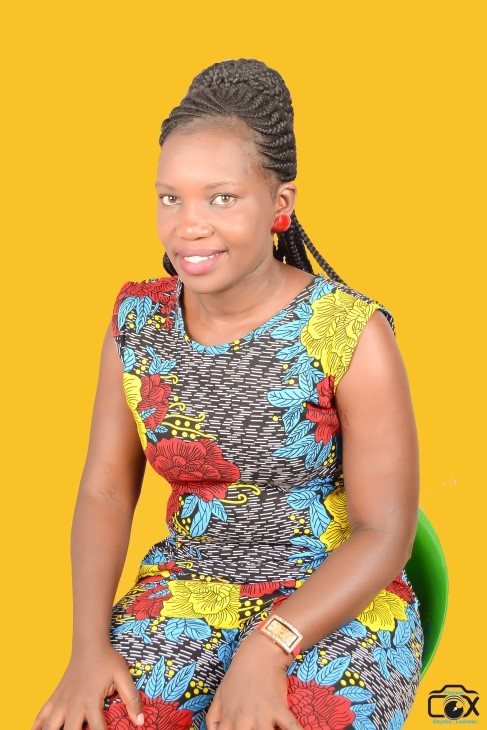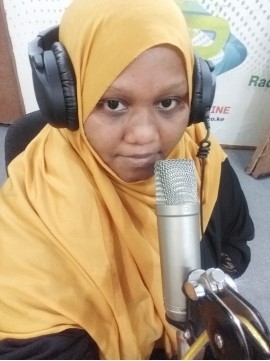Radio stations report huge, unexpected benefits

Radio stations that ran the Tumaini Hewani broadcasts report huge, unexpected benefits including increased listenership.
Conversations with several stations indicate that the broadcasts led to a significant increase in their listenership figures and a widening of the demography they serve. The most dramatic outcomes were, however, witnessed in Bungoma where certain listeners created a group to back the radio broadcasts with word-of-mouth, sometimes face-to-face socially distanced support.
Jared Mudanya, Manager of Tandaza FM, says Tumaini Hewani broadcasts have given birth to a group called The Wise Men. The group comprises senior citizens whose ages are above sixty. In fact, the chairman of the group is a 70-year old man. “The purpose,” the group says, “is to help the government and the radio station to convince the local community to respect the COVID-19 protocols.” They have said, “they want to rally support for Community Health Volunteers (CHVs) so that the community can be more receptive to the COVID-19 messages.” The Wise Men participate in the on-air discussions and emphasize that if they, a vulnerable group who have enjoyed long life take the disease seriously, the rest should do so much more.
The group held its first meeting on September 6, 2020 and has organized to have a second one on October 7, 2020. In that meeting they will be joined by the officer in charge at the COVID-19 Centre at Webuye Hospital. This goes to show not only how deeply the radio messages penetrated but also how seriously they impacted the community.
That, however, is just one dimension to the impact of the Tumaini Hewani broadcasts. The other part that can be deduced from the above is that the demography served by Tandaza FM widened spectacularly. “Ordinarily radio stations major in entertainment. And in that area, we compete with seriously resourced national stations. The Tumaini Hewani broadcasts gave us a niche that most other stations did not have,” Jared says. “People are getting onboard because they say our content is more mature and purposeful.”
Jared also says the Tumaini Hewani broadcasts are produced to high professional quality, challenging the station to raise its own. “Our listeners,” he says, “believe it is our standards that have risen. They don’t realize it is facilitated content. It has given us very high standards to aspire to. There has also been a more personal impact.” Jared says that “before the Tumaini Hewani broadcasts, COVID-19 messages were for him a mix of rumours, myths and corruption reports. The broadcasts clarified his knowledge and helped him to align all the various threads of information that filled the air.” One of the miracles of the broadcasts was Eunice Simwa, the lady whose story we carry in another report.
“I met a person who had suffered and recovered from COVID-19 and I’m ok. What testimony could be greater than that?” Jared asks rhetorically. “When I see stigma, I can confidently share the knowledge I have got and the evidence I am – people don’t catch the disease by being kind, sensitive and understanding. Yes social-distancing remains key, but stigma and ostracisation – those don’t help at all.”

Eunice, who had lost her father to COVID-19 and got infected together with her husband, was isolated by the community, and subjected to some form of harassment. Her children were being chased home from the streets and the family could not go out to buy any food. Jared says they interviewed her on air. Alongside new and clear information coming out of Tumaini Hewani broadcasts, the community felt guilty about how they treated her. They paid her and her family a socially distanced visit, bearing gifts. Talk of unintended outcomes to the Tumaini Hewani broadcasts.
In Turkana the impact was not as spectacular but Lydia Olola, the manager who also doubles as a presenter at Echami FM says they have more listeners than ever before. She can monitor it through the radio station’s Facebook page which has experienced 25 per cent jump in social media following. “Every single day we can see and hear the number of followers increasing,” says Lydia. “Our social media posts have more likes than before. And all this happened when we began to air Tumaini Hewani broadcasts. We’d stream it live on Facebook and the response went beyond our usual boundaries.”
Lydia says they get calls from as far as Kitale and Nyamira, locations in other counties far from the reach of Echami FM in Turkana. The callers say they are following on social media. Within the streets of Lokichar Sub-County, people stop her and other station personnel to ask questions about the various topics aired and some of the guests hosted on the Tumaini Hewani broadcasts.
“We have also upgraded our journalistic skills,” she says. “Having to go out to the streets to interview people, to interact with them and find out just how impactful those messages have been, that has showed us how to do our programming and how to win the hearts and minds of the listeners.”
Lydia has had to interact with matatu operators at Lokichar, all whose vehicles are virtually tuned to Echami FM. They are laying aside the myths, stigma and rumours about COVID-19. This is putting them in a good place to protect themselves and spread facts rather than myths. What Lydia appreciates even more is that the broadcasts have helped them to raise their level of professionalism, programming, and content development.

Nasra Said Mkali, a presenter at Rahma FM in Mombasa appreciates the Tumaini Hewani messages for engaging their audience by their slick packaging. “The messages really gave us a platform to reach our audience in a way we’ve never been able to do before,” she says. “Even the fact that a notable number of our audience didn’t believe COVID-19 existed could only have come to light because of interaction with us. Once the broadcasts began to air, there was no ‘silent majority.’ Everybody wanted to be heard.”
She said that at the commencement of the broadcasts the number of nay-sayers was intimidatingly huge. They called and some were angry with the government. As they progressed, that number kept dwindling as the audience became increasingly convinced of the existence and danger of the novel Corona virus.” Like the others, Nasra says the broadcasts have challenged them to raise their level of programming and content development. Further, they have developed an authentic connection with their listeners. “Our audience is now a lot emotionally and mentally tuned to the broadcasts,” she says. “The call-ins are particularly robust, and the callers bring in a lot of energy and debate, which draws new listeners.”
Nasra too says she has grown professionally. She refined her skills at scripting stories that address issues of public interest. She went out to the streets to meet the audience. For instance, she attended the burial of a popular fan of their station where she not only observed people’s fidelity to the COVID-19 safety protocols but was also able to interview them.
It would seem then that the Tumaini Hewani broadcasts have been the gift that keeps giving, as far as the radio stations are concerned.
These radio stations are part of the DigiRedio Social and Behaviour Change Platform powered by Centre for Behaviour Change and Communication (CBCC). The two-way COVID-19 risk communication and community engagement through radio aims to help create and sustain preventive behaviours and complement control measures against COVID-19 in Kenya. This project is implemented in 33 radio stations in 30 Counties through the Ministry of Health with support from the American People through USAID.
Our Services
Brochures
View our Centre for Behaviour Change and Communication Portfolio.













